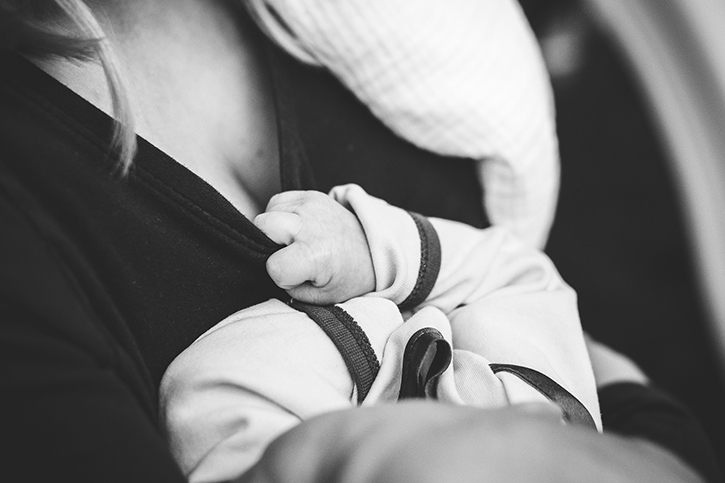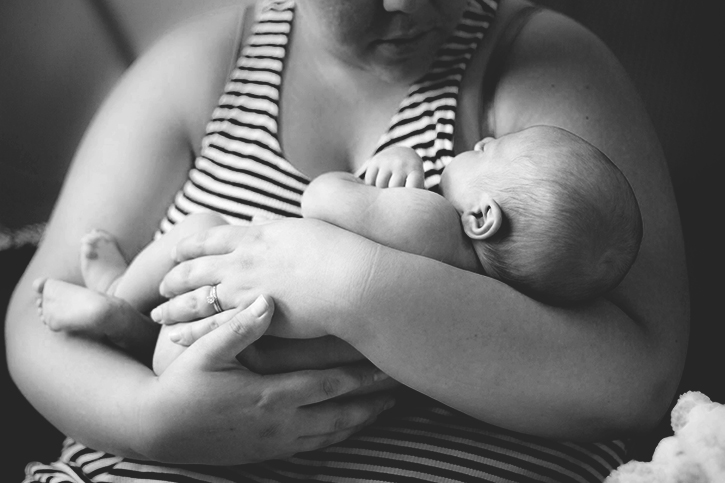The first few weeks after childbirth is a miraculous time for all new mothers, but it can also be stressful and overwhelming. Recovering from the birth with a lack of sleep can be exhausting, especially with a constant stream of visits from family and friends wanting to meet the newest member of your family. It’s important to remember that your focus should remain on your baby and getting accustomed to breastfeeding. Here are a few questions you might have about breastfeeding in your first few weeks.

A mother’s first few weeks with her baby are a time she will remember for the rest of her life, but there are a few things to consider to make it as stress-free as possible
How Do You Latch Properly?
Learning to latch properly is essential to healthy feeding and making breastfeeding a more comfortable experience for both you and your baby. Here are some tips to remember:
• Your baby should be positioned on their side, so they are facing you and if necessary propped up on a pillow.
• There is a lot of research to suggest skin on skin contact is important for calming your baby and helping your bond to grow.
• You shouldn’t have to lean forward or lean in to meet your baby, rather they should be positioned so you can both sit comfortably.
• To latch hold your thumb and finger on your areola and your nipple on your baby’s lips until they open their mouth.
• Tilt your baby’s head back gently and place the nipple on the lower lip, before tilting forward towards the upper lip. This should help your baby scoop up the nipple.
• Latching may be uncomfortable within the first 30 seconds, however, if it persists you may need to seek help from a lactation expert.
What Are Some Ways to Hold a Baby While Breastfeeding?
New mothers have different preferences in their positioning when breastfeeding their babies and some may work better for you. Different situations may also require different holds, so it’s good to have a few up your sleeve.
The Cradle: Positioning your baby on your forearm and their head under your elbow, pull them close with their belly on yours and support their bottom with your other hand.
The Football: Place your baby on a pillow that is tucked in close to your side and rest your arm along the pillow, directing their arm to your breast. Use the other hand to support their head.
Side-Lying: As the name suggests, this involves you lying on the side with the breast your baby will be feeding on. Recline on a pillow and bring your baby close to you, while supporting their bottom. Your free arm can be used to direct your breast to their mouth.
How Often Should I Expect To Breastfeed My Baby?
Like a lot of things when it comes to pregnancy and childbirth, there is no one answer to this question. Different babies feed differently and the same babies can feed differently on different days, so don’t be stressed if feeding patterns are irregular, especially in the first seven days.
It can sometimes take three days for a mother’s milk supply to come in and sometimes weeks to adjust to the newborn’s needs.
After the first seven days, you will probably get into a rhythm with your newborn, and you can expect a baby to want to feed about 10 times every 24 hours, with most requiring feeding about every 2 hours.

How Long Should I Feed My Baby Each Time?
Some babies are quick to feed and will be full after just 10 minutes, where others can spend a whole hour suckling. During each feed, allow your baby to decide how much milk they want from one breast before offering the other.
Your baby may or may not want more and when they are done you’ll know – a baby will detach by themselves and seem placid and probably even fall asleep after a long feed. Some call this ‘Milk Drunk’. Offer the opposite breast to the last one used for the next feed.
How Can I Tell If My Baby Is Getting Enough Milk?
This is a common concern for a lot of new mothers, and that’s ok – you want to make sure your newborn is getting the nutrients they need to grow healthy and strong. You can’t tell exactly how much milk a baby is consuming during breastfeeding because a breast is not a measuring bottle, however, your pediatrician will check your baby’s weight regularly during the early weeks.
But there’s a couple of things that you can keep in mind to monitor your baby yourself. The best way to check your baby’s eating habits is to observe their nappies. As a general rule you can expect one wet and one solid nappy for each day of your baby’s life, up to the first five days. By the time your baby is 7 days old, they should have six to eight wet nappies a day, with some solid mustard-coloured stools. Again this can vary, depending on a newborns’ feeding habits.
As long as your baby is putting on weight and there’s evidence in the diapers, you can probably bet that they are getting enough milk, but if you have any concerns, it’s best to check in with your paediatrician.
If you have any questions about your pregnancy or breastfeeding in the first few weeks, or would like to book an appointment, please don’t hesitate to give us a call.
Dr Brown is one of the most trusted obstetricians in Sydney and will be thrilled to give you complete and compassionate care in every way possible.